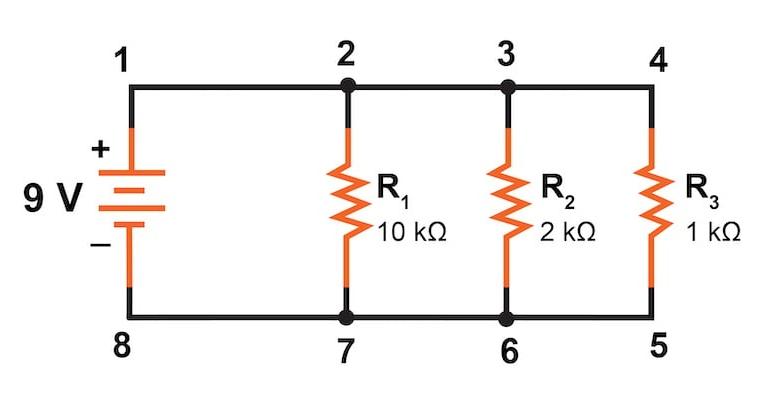Are you curious to know what is effective resistance? You have come to the right place as I am going to tell you everything about effective resistance in a very simple explanation. Without further discussion let’s begin to know what is effective resistance?
In the realm of electrical circuits and networks, the concept of “effective resistance” stands as a guiding principle that simplifies complex systems into manageable components. Effective resistance, also known as equivalent resistance, plays a crucial role in analyzing circuits and understanding how current flows within them. Join us as we explore the world of effective resistance, its significance, calculation, and its role in unraveling the mysteries of electrical networks.
What Is Effective Resistance?
Effective resistance refers to the single equivalent resistance that represents a complex network of resistors or other circuit elements. In simpler terms, it’s the resistance value that can replace an entire network without altering the behavior of the circuit. This concept is especially valuable when dealing with intricate circuit configurations.
The Significance Of Effective Resistance:
- Simplification: Complex networks of resistors can be challenging to analyze directly. By calculating the effective resistance, engineers and scientists can simplify circuit analysis, making it more manageable and accurate.
- Circuit Behavior: Effective resistance enables us to predict how a circuit will behave without needing to delve into intricate details. It’s a key tool for understanding current flow, voltage drops, and power distribution.
- Optimization: In various applications, knowing the effective resistance helps engineers optimize circuits for specific requirements, such as minimizing power losses or maximizing energy efficiency.
- Application in Real-World Scenarios: Effective resistance calculations find application in fields such as electronics, electrical engineering, and even in understanding fluid dynamics in pipelines and networks.
Calculating Effective Resistance:
Calculating effective resistance depends on the configuration of the resistors in a network. Here are some common scenarios:
- Series Resistors: In a series circuit, where resistors are connected end-to-end, the effective resistance is the sum of individual resistances.
- Parallel Resistors: In a parallel circuit, where resistors share common nodes, the reciprocal of the effective resistance is the sum of the reciprocals of individual resistances.
- Combination of Series and Parallel: Complex circuits can be broken down into series and parallel components. The effective resistance is calculated by combining the results of series and parallel calculations.
Practical Applications:
- Electrical Engineering: Effective resistance analysis helps engineers design circuits, calculate power losses, and optimize performance.
- Circuit Analysis: It simplifies circuit analysis, making it easier to troubleshoot and predict behavior.
- Circuit Design: Effective resistance aids in designing circuits for specific applications, such as voltage regulation or amplification.
- Electronics: It’s crucial for designing integrated circuits, PCB layouts, and optimizing circuit designs for minimal losses.
Conclusion:
Effective resistance serves as a guiding light in the complex labyrinth of electrical networks. By simplifying intricate circuits into a single value, it empowers engineers and scientists to understand, analyze, and design circuits with precision. As you delve into the fascinating world of electrical engineering, remember that effective resistance is more than just a mathematical concept—it’s a powerful tool that illuminates the pathways of current flow, guiding the creation of innovative and efficient electrical systems.
FAQ
What Is The Definition Of Effective Resistance?
Hint: Effective Resistance refers to the resistance between two points in any electric network in any electric circuit. The total resistance of all the resistors used in any electric circuit where the resistor is two or more is the effective resistance of the circuit.
What Is The Formula Of Effective Resistance?
The effective resistance between vertices a and b (after connecting a voltage source between them) is defined as the potential difference between a and b per unit net current from a to b. In other words, Rab = va vb Iab . Once we fix the current from a to b to be Iab = 1, the effective resistance becomes Rab = va vb.
What Is Effective Resistance In Parallel Circuit?
The effective resistance of a circuit containing resistances in parallel is smaller than any of the individual resistances. For example : R1=2Ω and R2=3Ω ∴ Effective resistance Rp1=R11+R21.
What Is Effective Resistance Of A Conductor?
The phenomenon uneven distribution of current within the same conductor due to the inductive effect is known as the ‘skin effect’ and results in an increased effective resistance of the conductor. The ratio of a.c. to d.c. resistance, Rac/Rdc, is the measure of the ‘skin effect’ and is known as the ‘skin effect ratio’.
I Have Covered All The Following Queries And Topics In The Above Article
What Is Effective Resistance
What Is The Effective Resistance Between A And B
What Is The Effective Resistance Between P And Q
What Is The Effective Resistance Between A And B All Resistors Are 1 Ohm
What Is The Effective Resistance Between A And C
What Is The Effective Resistance In The Given Circuit
What Is Minimum Effective Resistance
What Is The Effective Resistance Between Points P And Q
What Is The Effective Resistance Between A & B? All
What Is The Formula Of Effective Resistance
What Is Effective Resistance Formula
What Is The Effective Resistance Of A Choke Coil
What Is The Effective Resistance
What Is Effective Resistance Class 10
What Is Effective Resistance Between A And B
What Is Effective Resistance
What is effective resistance?
What is the effective resistance if there are N resistors in parallel?
